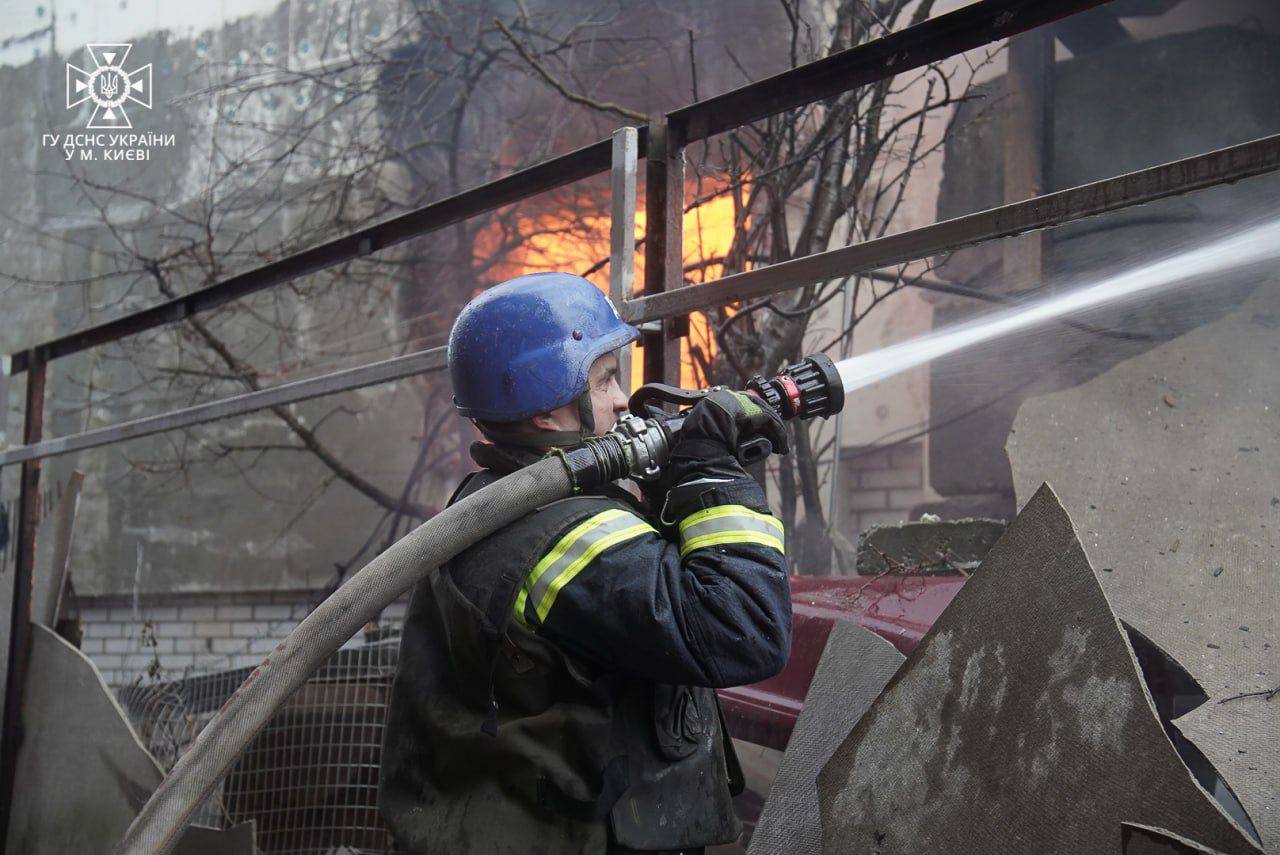The Dangerous Stalemate Over Iran’s Nuclear Program

© Arash Khamooshi for The New York Times


© Arash Khamooshi for The New York Times


The era of nuclear arms reduction is officially over. The world is returning to a trend of expanding nuclear arsenals, intensifying nuclear rhetoric, and abandoning arms control agreements, says Hans Kristensen, Associate Senior Researcher at the Stockholm International Peace Research Institute’s (SIPRI) Weapons of Mass Destruction Program, per Newsweek.
According to Kristensen, the world is witnessing the growth of nuclear stockpiles, the escalation of rhetoric, and the rejection of arms control.
In recent weeks, the US has conducted a test launch of a Minuteman III intercontinental ballistic missile, without a warhead, but with a clear political message.
The test was a response to recent Russian military drills, which took place after the collapse of the planned US President Donald Trump– Russian President Vladimir Putin meeting in Budapest regarding the war in Ukraine. Russia has not demonstrated readiness to make concessions or even discuss compromise conditions to end hostilities.
The US military said the purpose of the launch was to evaluate the reliability, readiness, and accuracy of the weapon system.
Before the American Minuteman III was launched, Russia launched a Yars intercontinental ballistic missile from the Plesetsk Cosmodrome, which hit its target at the Kura range in Kamchatka.
The Kremlin stated that the exercise aimed to test the readiness of its military command structures. Putin personally observed the process.
Following the tests, Trump stated that he could work on denuclearization with Russia and China, but acknowledged that both countries could catch up to the US within four to five years.
All three nuclear powers — China, the United States, and Russia — now possess a complete nuclear triad: intercontinental missiles, ballistic missile submarines, and nuclear-capable aircraft. This ensures that each has the ability to deliver a retaliatory strike, even after sustaining an initial attack.
It remains unclear whether Beijing or Moscow will respond with new tests. One thing is clear: the world has entered a phase of dangerous nuclear modernization.


© Associated Press
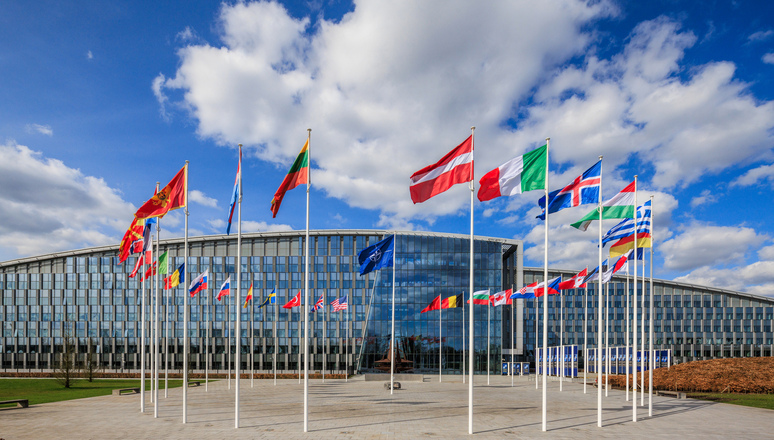

Belgium, home to NATO's headquarters, has acknowledged the security problem to counter waves of drones spotted in many European states this fall. The country has admitted it is struggling to deal with the targets spying on a critical military base that hosts its advanced fighter jets, Business Insider reports.
Theo Francken, the Belgian defense minister, said on 2 November that the country detected at least three large drones flying high above the Kleine-Brogel air base in a single night.
The base, in northeastern Belgium, houses the country’s fleet of F-16 Fighting Falcons, and Brussels plans to station its new F-35 Lightning II aircraft there.
It is also believed that the US stores several dozen nuclear weapons at Kleine-Brogel as part of its nuclear deterrence strategy in Europe.
Francken said that a deployed drone jammer failed to neutralize the drones. He suggested that the failure might have been caused by issues with distance or by the jammer not being tuned to the correct radio frequency.
He added that a police helicopter and several vehicles were mobilized to pursue one of the drones, but they eventually lost track of it after following the system for several kilometers.
Francken said that “additional counter-drone air systems are urgently needed.”
Although he did not specify who was operating the drones, European leaders have repeatedly suggested that Russia is behind a series of recent similar incursions into NATO territory.
On 28 October, Ukrainian President Volodymyr Zelenskyy said that Russia employed oil tankers to launch and control drones targeting European nations. This way, the launch of drones may be invisible.
A series of incidents has pushed Europe to look for cost-effective ways to counter enemy drones, which are often much cheaper than the interceptors NATO has traditionally relied on for aerial threats.
Some NATO allies, including Denmark and Poland, have sought to strengthen their air defenses with help from Ukraine, which frequently faces hundreds of Russian drones in a single night.


© Anna Rose Layden for The New York Times


© Alex Brandon/Associated Press


In the span of 24 hours, unidentified drones were spotted twice over Kleine-Brogel Air Base, a highly sensitive military installation in Belgium that stores US nuclear weapons. The incidents triggered aerial police responses and the use of military jamming devices, but no drone operators were located or apprehended.
In the early evening of 1 November 2025, around 6:30 p.m., drones were detected over Kleine-Brogel Air Base in Peer, Limburg Province, HLN reported. The site is known to house American nuclear weapons and is set to become the home of Belgium’s F-35 fighter jets starting in 2027.
Police were immediately alerted, and a helicopter was deployed to pursue the drones, which reportedly flew toward the Netherlands. Authorities were unable to intercept them or identify the drone pilots.
On 2 November, Belgian Defense Minister Theo Francken confirmed that military forces fired a drone-jamming gun in an effort to disable one of the drones. The device, which uses radio waves to disrupt drone communication, proved ineffective. Francken suggested that either radio frequency mismatches or distance may have rendered the jammer useless.
He stated earlier on X that the drones observed overnight were of a larger type and appeared to have a "clear mission" targeting Kleine-Brogel specifically, rather than being accidental overflights. He also confirmed that detection systems had picked up the drone presence and thanked the base guard team for its vigilance. A local resident captured video footage of a drone near the base, which circulated in Belgian media.
Drones were also seen overnight near the military area in Leopoldsburg, which lies close to Kleine-Brogel, Belga said.
The drone incidents in Limburg follow similar suspicious flights last month over a military base in Elsenborn.
Previously, unidentified drones have been sighted twice over the military base in Marche-en-Famenne in southern Belgium.
No suspects have been identified in any of the recent incidents.


Tehran vows to restore nuclear facilities after US strikes. Iranian President Masoud Pezeshkian has declared the objects will be rebuilt with even greater power, despite external pressure, Reuters reports.
Iran is considered part of the so-called "Axis of Upheaval," which is an informal grouping or strategic alignment among China, Russia, Iran, and North Korea. It is characterized by an anti-Western and especially an anti-American stance, per the Center for a New American Security.
Western countries have accused Iran of secretly attempting to develop a nuclear bomb through uranium enrichment and demanded that it stop such activities. Tehran has denied any attempts to turn enrichment into weapons, insisting that the program is purely for civilian energy purposes.
In June, Tehran and Washington conducted five rounds of indirect nuclear negotiations, which culminated in a 12-day aerial war in June, during which Israel and the US bombed Iranian nuclear facilities.
After the strikes, US President Donald Trump said the nuclear program was completely destroyed. The Iranian leadership, which consistently characterizes US policies as aggressive, imperialistic, and destructive, remained in the country.
"Destroying buildings and factories will not create a problem for us, we will rebuild and with greater strength," the Iranian president told state media.
Pezeshkian emphasized that Iran does not seek to develop nuclear weapons, insisting the program serves purely civilian purposes.
"It's all intended for solving the problems of the people, for disease, for the health of the people," he said.
The statement came during his visit to the Atomic Energy Organization of Iran, where Pezeshkian met with leaders of the nuclear industry. His remarks signaled that Iran will not abandon its nuclear path, even in the face of attacks or sanctions.
Earlier, Iranian leader Ayatollah Ali Khamenei dismissed Trump's claims that the US destroyed Tehran's nuclear capabilities in a series of large-scale bombings in June 2025. His statements came amid Russian claims that it intends to deepen cooperation with Iran "in all areas."
Iran has supplied large batches of kamikaze drones to Russia for the war in Ukraine, killing hundreds of civilians. Tehran is also one of the largest financial sponsors of the Hamas terrorist group, providing the group with resources for terrorist operations, per CNN.
Both countries are planning to formalize their partnership through high-level agreements, with a focus on energy infrastructure, military coordination, and nuclear projects.


© Doug Mills/The New York Times


© Los Alamos National Laboratory


© Corbis, via Getty Images


© Corbis, via Getty Images


© Pool photo by Pavel Bednyakov


Russian officials are escalating nuclear threats toward the United States while President Vladimir Putin touts new nuclear systems. The Institute for the Study of War (ISW) reports that a senior Russian lawmaker suggested Moscow could deploy nuclear-capable missiles to Venezuela and Cuba, invoking Cold War fears just as Putin unveils new underwater and airborne nuclear weapons.
On 29 October, Russian State Duma Defense Committee Deputy Chairperson Alexei Zhuravlyov said Moscow could deliver nuclear-capable missiles to “Venezuela or Cuba,” emphasizing their proximity to what he called Russia’s “main geopolitical adversary” — the United States. Zhuravlyov declared that the US is “not a friend or partner” but an “enemy.”
Putin announced on 29 October that Russia tested its Poseidon nuclear-powered unmanned underwater vehicle a day earlier.
"Putin is detailing the alleged attributes of the weapons to add weight and urgency to his nuclear threats to enact concessions from the United States on Ukraine," ISW wrote.
The timing of Putin’s remarks directly followed US President Donald Trump’s 27 October call for the Kremlin to focus on ending the war in Ukraine instead of testing missiles. Putin’s announcements appear aimed at demonstrating defiance and projecting strength. According to ISW, the Russian leader is using nuclear rhetoric to force concessions from Trump and European governments "that his army cannot achieve on the battlefield."
Russia is also using Belarus to threaten Europe. Belarusian Presidential Press Secretary Natalya Eismont told Kremlin newswire TASS on 28 October that the Oreshnik missile system will go on combat duty in December 2025. Kremlin Spokesperson Dmitry Peskov said the move was a response to what he called “Russophobic statements” and “militaristic hysteria” from Europe.
Peskov pointed to officials in the Baltics, Poland, France, and the United Kingdom as justification for the deployment, calling the system “dear” to both Belarus and Russia. Putin had previously announced that Russian and Belarusian specialists would decide on new deployment sites for Oreshnik by the end of 2025.
"Russia is leveraging the Oreshnik system as part of a reflexive control campaign aimed at undermining Western resolve to militarily support Ukraine," ISW wrote.


© Haiyun Jiang/The New York Times


© Haiyun Jiang/The New York Times


© Haiyun Jiang/The New York Times


© Kadielle Shaw/U.S. Space Force, via Air Force Global Strike Command


Russian President Vladimir Putin announced on 29 October that the country had successfully tested its nuclear torpedo, “Poseidon.” This is a long-range underwater drone capable of carrying a nuclear warhead, Newsweek reports.
The test of the new Russian nuclear torpedo Poseidon marks an escalation in the global strategic arms race amid Russia’s war against Ukraine. The apparent aim of these statements is to increase pressure on US President Donald Trump, who for nearly a year has been calling on Russia to end its war against Ukraine.
The Poseidon system, sometimes referred to in Western media as a “nuclear super-tornado,” is designed to bypass existing US missile defense systems and potentially generate catastrophic radioactive waves against coastal targets.
Poseidon, officially known as the multipurpose oceanic system Status-6, is an autonomous underwater torpedo with a nuclear engine, capable of carrying a nuclear warhead with a yield of up to 100 megatons.
The strategic and environmental consequences are significant. The Poseidon warhead is assumed to be a cobalt bomb, which maximizes long-term radioactive contamination.
According to NukeMap models cited by Balestrieri, a detonation could render an area roughly 1,700 by 300 kilometers uninhabitable due to radioactive fallout or create a “nuclear tsunami” affecting coastal cities.
"The power of Poseidon significantly exceeds that of our most advanced intercontinental missile, Sarmat. There is nothing like it in the world," Russian President Vladimir Putin said.
Military expert Ivan Stupak says the Poseidon test is a threat to the abstract Western world, which has access to the world’s oceans.
"They are trying to show the world that they possess these superweapons. The whole world should supposedly be frightened, especially Europeans, and agree to any of Russia’s conditions," the expert explains.
Stupak adds, "The question is how quickly they can produce them: one, two, three per year. Overall, a nuclear reactor is not a cheap undertaking," UNIAN reports.
Another military expert, Oleksandr Kovalenko, commented on Putin’s statement, emphasizing that the Kremlin leader is once again showcasing missiles that no one has seen.
It is evident that Vladimir Putin “has shifted into a mode of intimidating Donald Trump,” the expert writes.
"The gas station that recently began importing fuel from China cannot respond economically or mirror sanctions, so they are trying to intimidate," he suggested.
The Poseidon test is part of a series of nuclear threat statements that Russia intensified after the cancellation of the Trump-Putin meeting in Budapest regarding ending the war, ExpresOnline writes.
The meeting was canceled because the Kremlin does not want to make concessions, demanding Ukraine’s capitulation.
Recently, Russia also announced the successful test of the Burevestnik missile with a nuclear propulsion system. It reportedly flew 14,000 kilometers. However, there are no independent assessments of the weapon, and it has been described only by Russia.
Kirill Dmitriev, the Kremlin's special envoy for investment and economic cooperation, stated during the visit to the US that “the security of the whole world” depends on peaceful US–Russia relations and warned the Trump administration about “complete annihilation of humanity."
“At the meeting, the president was briefed… on the successful tests of the new-class Burevestnik missile with a nuclear propulsion system. It is very important that this information is conveyed directly to the leadership and key figures in the US presidential administration,” said Dmitriev.
Russia also plans to deploy the Oreshnik missile system in Belarus. It can reach Ukraine or any other European state within minutes.


On 27 October, US President Donald Trump dismissed Russia’s recent test of a new nuclear-powered cruise missile, stating that Russian President Putin should be focused on ending the war in Ukraine. Trump made the remarks to reporters aboard Air Force One during a trip to Asia, according to news reports.
The President's direct public criticism links Russia's strategic weapons development to the all-out war, expressing his impatience with Putin's actions as the 3.5-year war remains deadlocked.
Speaking to reporters, Trump downplayed the test by highlighting US capabilities, CNN reported.
"They know we have a nuclear submarine, the greatest in the world, right off their [Russian] shore," Trump said. "So I mean, it doesn’t have to go 8,000 miles, and they’re not playing games with us, we’re not playing games with them either,"
He also added, "We test missiles all the time."
Trump then pivoted directly to Russia’s war in Ukraine.
"And I don’t think it’s an appropriate thing for Putin to be saying either, by the way." "He ought to get the war ended, a war that should have taken one week is now in its fourth year, that’s what he ought to do instead of testing missiles," the President stated.
Trump's remarks followed a Kremlin announcement on 26 October that Russia had successfully completed "decisive tests" of its 9M730 Burevestnik missile. According to a report from RFE/RL, President Putin was briefed by General Valery Gerasimov that the missile flew 14,000 kilometers (8,700 miles) for 15 hours.
Key facts on the missile:
First unveiled by Putin in 2018, the Burevestnik is one of several ostensibly "invincible" next-generation weapons. The program has been plagued by past failures, leading some experts to dub it a "flying Chernobyl," as noted by Novaya Gazeta Europe, due to the high risk of a nuclear-powered engine failing and dispersing radiation.
The test is widely seen as a signal from Moscow of its nuclear resolve as the war in Ukraine continues. By dismissing the test, Trump publicly suggested Putin's focus on strategic weapons was an inappropriate distraction from the ongoing conventional war in Ukraine—a war that he stated "ought to get... ended."
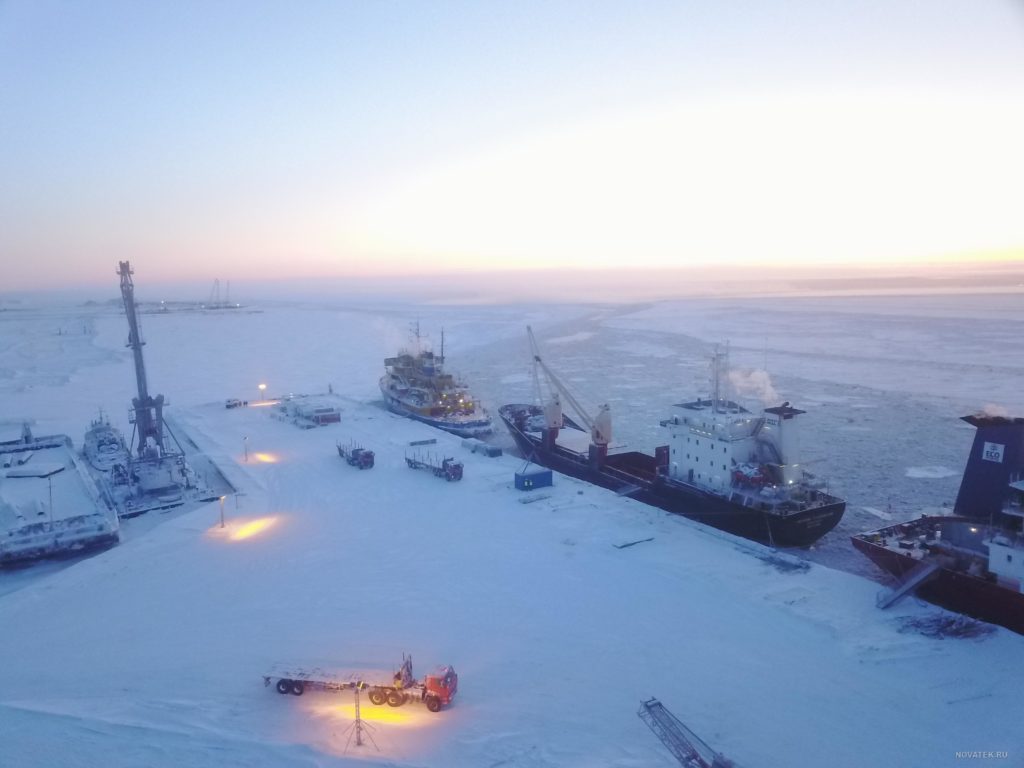

Russia strengthens its Arctic presence, directing nuclear weapons toward the US, warns Norwegian Defense Minister Ture Sandvik. According to him, Moscow is increasing its nuclear arsenal and targeting submarines around the Arctic Circle, preparing for potential conflict with NATO, The Telegraph reports.
The Arctic is rapidly becoming a key arena of geopolitical competition. One of the main sources of tension is the lack of clearly defined borders.
Under international law, no country owns the North Pole or the Arctic Ocean itself. However, Russia, the US, Canada, Norway, and Denmark control exclusive economic zones extending 200 miles from their coastlines.
Oslo has detected expanded weapons development on Russia’s Kola Peninsula, home to the valuable Northern Fleet and part of Russia’s nuclear arsenal.
Russia is building up on the Kola peninsula, explained Norway's defense minister, where one of the largest arsenals of nuclear warheads in the world is located.
“They (the nuclear weapons) are not only pointed towards Norway, but towards the UK and over the pole towards Canada and the US,” Sandvik said.
“We see that they’re testing new weapons, for example, hypersonic missiles, and they are testing nuclear-driven torpedoes and nuclear warheads,” he added.
The Kola Peninsula contains the world’s most concentrated nuclear arsenal and is critical for Moscow’s ability to deliver a “second strike.”
The Northern Fleet serves as the base for Russia’s Arctic naval forces and, according to Sandvik, is now used to test powerful new weapons and expand Putin’s nuclear potential.
“Even though Putin is losing heavily in Ukraine – he has lost one million soldiers – the Northern Fleet is intact. And they are developing it,” he said, highlighting a new frigate and a multipurpose submarine developed over the past two years.
The Northern Fleet has at least 16 nuclear submarines and hypersonic Zircon missiles capable of traveling eight times the speed of sound.
Alongside the US and the UK, Norway monitors the region 24/7, as the Arctic becomes a third critical battlefield, particularly due to new shipping routes opened by melting glaciers.
Putin seeks to establish the Bastion defense system, control the Bear Gap, and deny NATO allies access to strategic sea lanes.
His goal is to cut off supplies and support, and all Russian doctrines and military plans focus on this objective. For Norway, controlling these critical gaps is paramount.
Sandvik added that if the war in Ukraine ends, the Arctic Circle could become the next main theater of military operations, as there is a possibility that Putin will deploy forces to threaten Finland’s borders.


© Doug Mills/The New York Times


© Erin Schaff/The New York Times
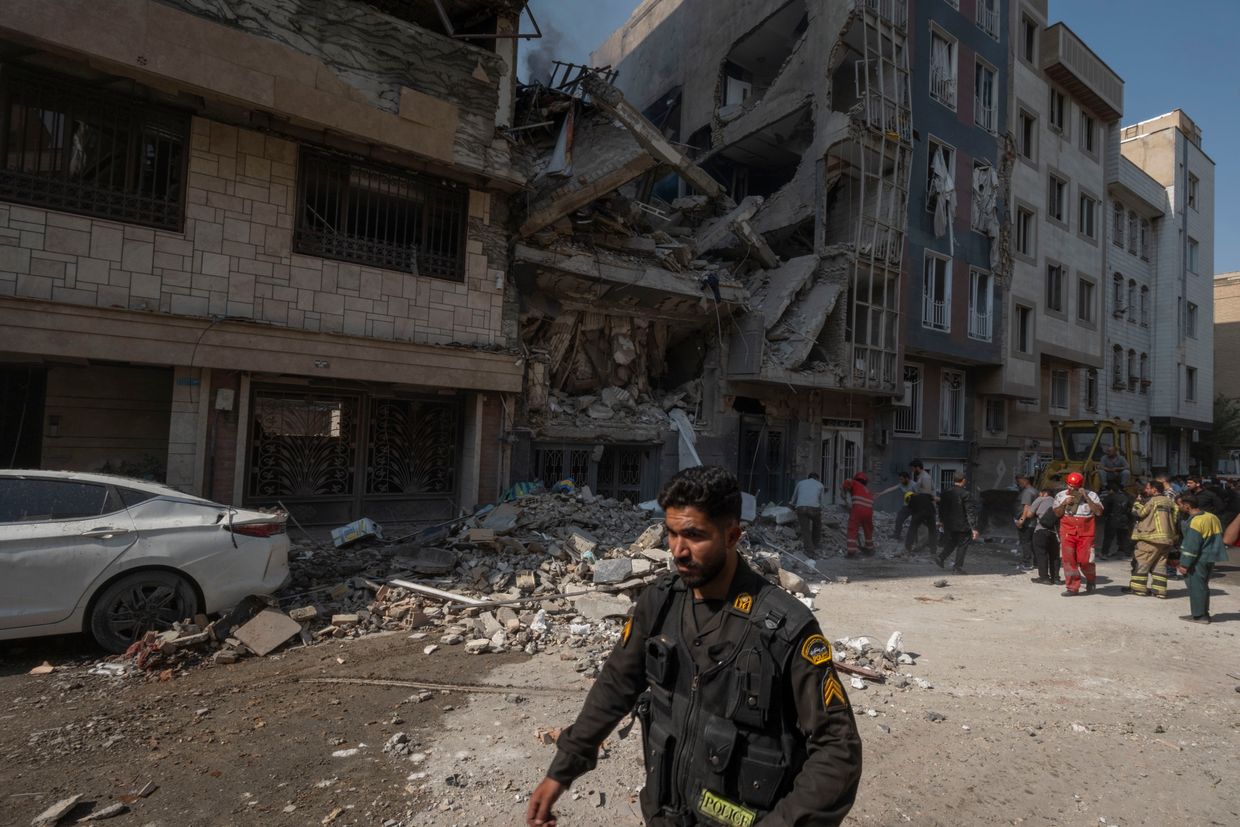

CIA Director John Ratcliffe told U.S. lawmakers that recent American military strikes dealt a major blow to Iran’s nuclear program by destroying the country’s only metal conversion facility, a U.S. official told Associated Press on June 29.
Speaking on condition of anonymity due to the sensitivity of the intelligence, the official explained that Ratcliffe outlined the significance of the strike during a classified briefing last week, calling it a major setback that would take Tehran years to recover from.
Ratcliffe also told lawmakers that most of Iran’s stockpile of enriched uranium likely remains buried under rubble at the Isfahan and Fordo nuclear sites, two of the three key facilities targeted by U.S. strikes.
While the uranium may still be intact, the official emphasized that the destruction of the metal conversion facility has left Iran without a crucial component needed to build a nuclear weapon. "You can’t do a nuclear weapon without a conversion facility," Secretary of State Marco Rubio said during the NATO summit. "We can’t even find where it is, where it used to be on the map. You can’t even find where it used to be because the whole thing is just blackened out. It’s gone. It’s wiped out."
President Donald Trump has continued to defend the operation, which came just before a ceasefire between Israel and Iran took effect last Tuesday.
"It was obliterating like nobody’s ever seen before," Trump said in an interview with Fox News. "And that meant the end to their nuclear ambitions, at least for a period of time." Defense Secretary Pete Hegseth echoed that assessment, stating the sites were “destroyed.”
A preliminary report by the U.S. Defense Intelligence Agency, however, concluded the strikes inflicted significant damage but did not completely demolish the Fordo, Natanz, and Isfahan facilities.
Rafael Grossi, Director General of the International Atomic Energy Agency, said on CBS’ "Face the Nation" that three major Iranian nuclear sites with “capabilities in terms of treatment, conversion and enrichment of uranium have been destroyed to an important degree.”
However, he cautioned against overstating the damage. “Some is still standing,” Grossi said, adding, “If they so wish, they will be able to start doing this again.” He emphasized that inspectors must be allowed in to fully assess the extent of the destruction. “Frankly speaking, one cannot claim that everything has disappeared, and there is nothing there,” he said.
The destroyed metal conversion facility, located at the Isfahan nuclear site, had played a central role in Iran’s nuclear weapons development. The facility’s function—to convert enriched uranium gas into dense metal—is a critical step in producing the explosive core of a nuclear bomb. Ratcliffe emphasized this point during the classified hearing, describing the facility’s elimination as a strategic win that effectively undercuts Iran’s ability to weaponize its uranium.
Ratcliffe also told lawmakers that the 12-day U.S. assault severely weakened Iran’s air defense systems. According to the U.S. official, the CIA director explained that Iran now lacks the capability to defend against future Israeli airstrikes, making any attempts to rebuild its nuclear program highly vulnerable.
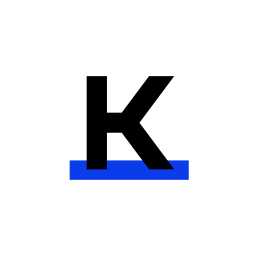 The Kyiv IndependentDmytro Basmat
The Kyiv IndependentDmytro Basmat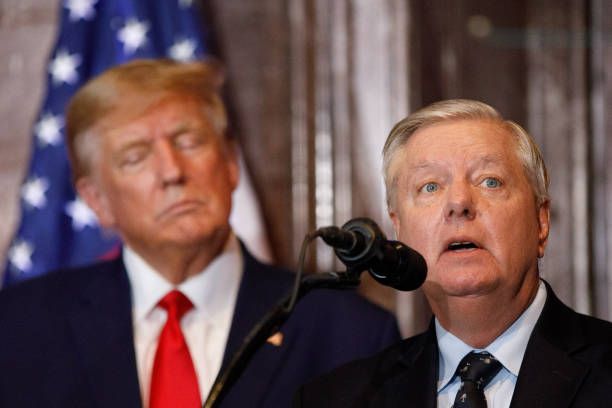


The United States would consider bombing Iran again if the country's nuclear program once again became of concern, U.S. President Donald Trump told reporters during a press briefing on June 27.
When asked whether Trump would consider bombing Iran if the country were able to enrich uranium to a concerning level, Trump responded: "Sure. Without question, absolutely."
On June 21, the United States conducted strikes on three major Iranian nuclear sites, Fordow, Natanz, and Isfahan, dropping over a dozen bunker buster bombs on the sites and causing significant damage to the country's nuclear program.
"Turned out to be unbelievable," Trump said of the strikes on June 27, despite mixed reports on the success of the strikes.
A leaked U.S. Defense Intelligence Agency (DIA) assessment, reported by CNN, found that the strikes did not destroy the core of Tehran's nuclear program. Instead, the intelligence suggests the attacks likely delayed Iran's progress by "a few months."
Despite the leak, Trump administration officials have rebuffed reports that the strikes did not fully fulfill its object, amid reports of Iran having possibly moved its enriched uranium away from the sites.
"The objective was to eliminate enrichment in Iran… and he achieved that objective," U.S. Special Envoy to the Middle East Steve Witkoff said on June 24, adding that he personally reviewed damage assessments and saw "no doubt" that key nuclear infrastructure was destroyed.
Trump's comments on future attacks comes as Iran's Supreme Leader Ayatollah Ali Khamenei downplayed the success of the strikes, claiming victory over Israel and the United States.
"I SAVED (Khamenei) FROM A VERY UGLY AND IGNOMINIOUS DEATH," Trump wrote on Truth social on June 27, adding that he has halted plans to potentially ease sanctions on Iran. "The sanction are BITING," Trump wrote.
"Iran has to get back into the World Order flow, or things will only get worse for them," he added.
On June 24, Trump announced that a ceasefire between Iran and Israel had come into effect, following the U.S. strikes on Iranian nuclear facilities and a retaliatory Iranian attack on a U.S. military base in Qatar.
 The Kyiv IndependentThe Kyiv Independent news desk
The Kyiv IndependentThe Kyiv Independent news desk


U.S. Special Envoy to the Middle East Steve Witkoff condemned on June 24 the leak of an intelligence assessment that undercuts U.S. President Donald Trump's claims of having "obliterated" Iran's nuclear program.
His remarks follow a leaked U.S. Defense Intelligence Agency (DIA) assessment, reported by CNN, which found that strikes on three major Iranian nuclear sites, Fordow, Natanz, and Isfahan, did not destroy the core of Tehran's nuclear program. Instead, the intelligence suggests the attacks likely delayed Iran's progress by "a few months."
"It goes without saying that leaking that type of information, whatever the information, whatever side it comes out on, is outrageous. It's treasonous," Witkoff said during an appearance on Fox News. "It ought to be investigated, and whoever is responsible should be held accountable."
Witkoff, who served as Assistant to the U.S. president and led peace mission efforts during the recent conflict between Israel and Iran, defended Trump's portrayal of the U.S.-led strikes as a decisive success.
"The objective was to eliminate enrichment in Iran… and he achieved that objective," Witkoff said, adding that he personally reviewed damage assessments and saw "no doubt" that key nuclear infrastructure was destroyed.
The report leaked in media contradicts public statements from Trump and Defense Secretary Pete Hegseth, who had described the operation as delivering "total obliteration." Trump, for his part, stood by the claim on June 24. "Those targets were obliterated," he said. "That place is demolished."
According to the DIA assessment, though the strikes damaged above-ground infrastructure, most of the centrifuges and the enriched uranium stockpile reportedly remain intact. The assessment also noted that underground sections of the sites, where Iran's most sensitive work is done, were largely unaffected. Two officials told CNN that Iran likely retains operational nuclear facilities that were not targeted.
Witkoff dismissed the report as "preposterous," insisting that the Isfahan conversion facility, critical to Iran's ability to weaponize enriched uranium, was "completely destroyed" by a 30,000-pound bunker buster bomb.
"Without conversion, you can't begin or end enrichment," he said. "They cannot weaponize, even if they've enriched to 90%."
Witkoff also claimed successful targeting of Fordow and Natanz, saying the U.S. dropped more than a dozen bunker busters on the sites that made the facilities inoperable.
The White House acknowledged the assessment’s existence but strongly dismissed it. "This alleged assessment is flat-out wrong and was classified as ‘top secret’ but was still leaked to CNN by an anonymous, low-level loser in the intelligence community," press secretary Karoline Leavitt said.
"The leaking of this alleged assessment is a clear attempt to demean President Trump, and discredit the brave fighter pilots who conducted a perfectly executed mission to obliterate Iran’s nuclear program. Everyone knows what happens when you drop fourteen 30,000 pound bombs perfectly on their targets: total obliteration."
Trump, for his part, stood by his assessment of the mission's success. "I think it’s been completely demolished," he said on June 24. "Those pilots hit their targets. Those targets were obliterated, and the pilots should be given credit.” Asked if Iran could rebuild, Trump responded: "That place is under rock. That place is demolished."
While both Trump and Hegseth praised the strikes as decisive, others expressed caution. Chairman of the Joint Chiefs of Staff Dan Caine said it was "way too early" to determine whether Iran retained nuclear capabilities.
 The Kyiv IndependentKateryna Hodunova
The Kyiv IndependentKateryna Hodunova
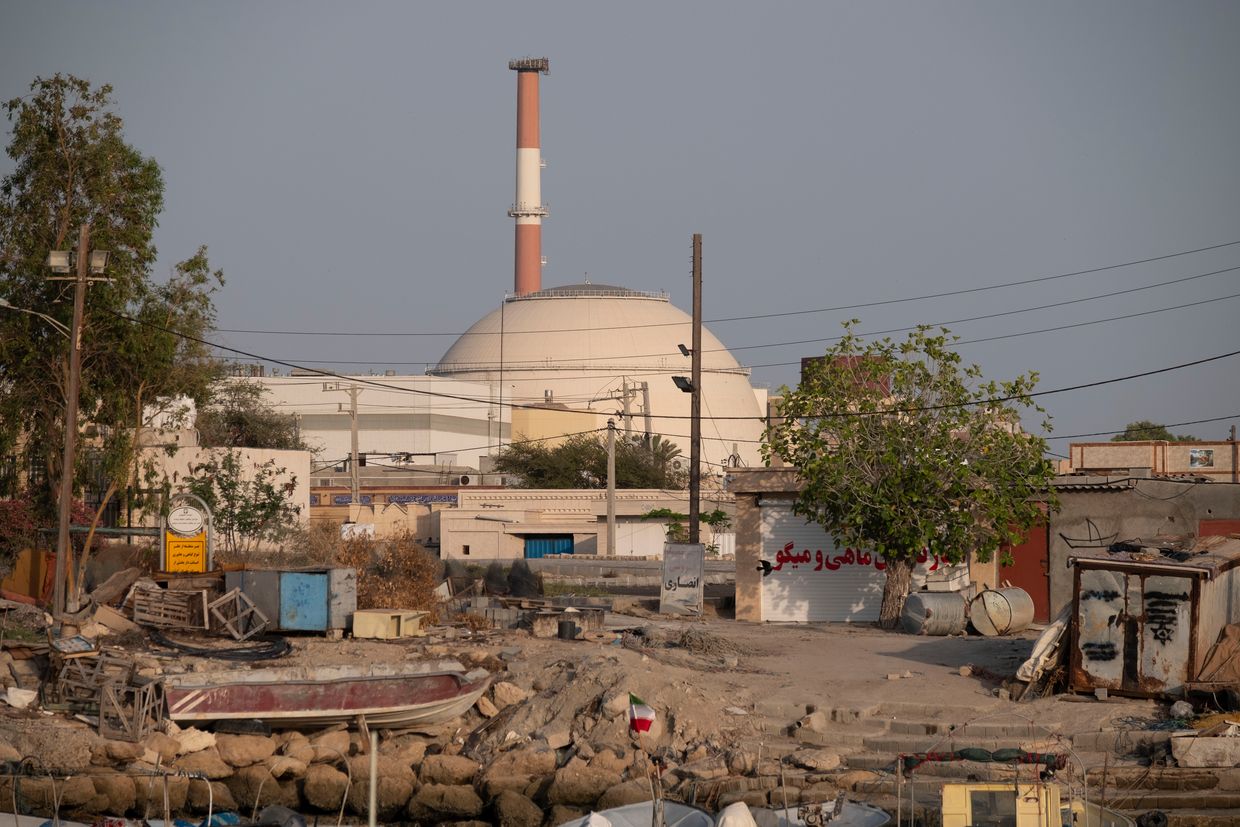

Ukraine’s Foreign Ministry said on June 22 that Iran’s nuclear program must be dismantled to prevent it from threatening the Middle East or the wider world, following U.S. air strikes on Iranian nuclear facilities.
“The Iranian regime’s aggressive actions and long-standing destructive policy aimed at undermining global peace and security – particularly its hostility toward Israel and others – have led to the current situation,” the ministry said in an official statement.
These comments come after U.S. President Donald Trump announced on June 21 that the U.S. air strikes targeted three nuclear sites in Iran, Fordow, Natanz, and Esfahan, joining Israel's campaign against Iran's nuclear program amid the escalating conflict in the Middle East.
The ministry added that Iran continues to destabilize the region through its support of proxy groups and is complicit in Russia’s war against Ukraine.
“Iran is complicit in the crime of aggression against Ukraine. The Iranian regime is providing military assistance to Russia, including the supply of UAVs and technologies that Russia consistently uses to kill people and destroy critical infrastructure,” the statement read.
The ministry noted that although the U.S. and other nations have made peaceful diplomatic efforts to curb Iran’s nuclear ambitions, these efforts have ultimately failed to produce meaningful results.
“As early as this spring, the United States warned Iran of the consequences in the absence of constructive steps.”
Ukraine also asserted its unique moral position on nuclear issues, having given up the world’s third-largest nuclear arsenal in the 1990s, and argued that the elimination of Iran’s nuclear ambitions would enhance global safety.
Meanwhile, Moscow has diplomatically backed Iran after Israel launched the initial air strikes against Iranian military and nuclear targets on June 13, an operation that sparked further waves of aerial attacks from both sides.
In its statement, the Russian Foreign Ministry urged a response from the U.N. Security Council, saying that "the confrontational actions of the U.S. and Israel must be collectively rejected."
 The Kyiv IndependentNatalia Yermak
The Kyiv IndependentNatalia Yermak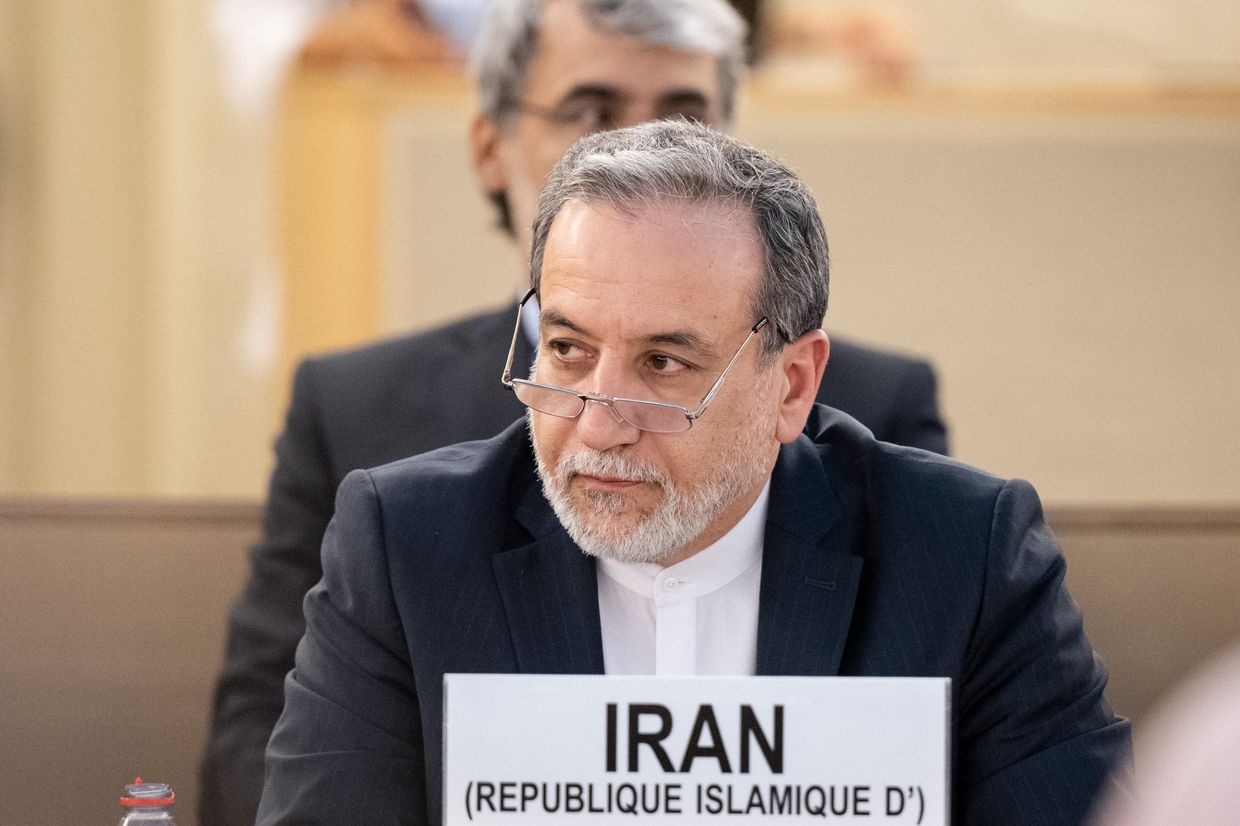


Iran's Foreign Minister Abbas Araghchi confirmed that he plans to travel to Russia on June 22 to meet with Russian President Vladimir Putin following the recent U.S. strikes on Iranian nuclear facilities.
The statement was made during Araghchi's press conference in Istanbul on June 22, according to Associated Press.
"We enjoy a strategic partnership and we always consult with each other and coordinate our positions," Araghchi said with reference to Russia.
Araghchi also said that there is "no red line" that the U.S. has not crossed in its recent actions against Iran.
Earlier that day, Russia condemned the U.S. strikes against Iranian nuclear facilities, calling them a violation of international law and Iran's sovereignty, a statement in stark contrast to Russia's full-scale war against Ukraine.
The Russian Foreign Ministry urged a response from the U.N. Security Council, saying that "the confrontational actions of the U.S. and Israel must be collectively rejected."
Tehran provides Moscow with ballistic missiles and thousands of Shahed attack drones for its war against Ukraine as part of Russia and Iran's close strategic partnership.
Russia and Iran have cooperated to develop their own nuclear programs as both countries face Western sanctions. Russia supplied Iran with the Middle East's first nuclear power plant despite objections from the West.
 The Kyiv IndependentKollen Post
The Kyiv IndependentKollen Post


The United States conducted air strikes on nuclear sites in Iran, U.S. President Donald Trump said on June 21, calling the attacks a "spectacular success."
"We have completed our very successful attack on the three nuclear sites in Iran, including Fordow, Natanz, and Esfahan. All planes are now outside of Iran air airspace," Trump said.
Iran's Foreign Minister Abbas Araghchi condemned the U.S. attacks and warned they will have "everlasting consequences," with Tehran requesting an emergency U.N. Security Council meeting.
Israel and Iran have exchanged strikes in recent days as Israel voices concern over Tehran's continued development of nuclear weapons.
The White House has backed Israel, remaining cautious in escalating its role in the conflict. The strikes mark U.S. military involvement in the conflict.
"A full payload of bombs was dropped on the primary site, Fordow. All planes are safely on their way home. Congratulations to our great American Warriors," Trump said.
The U.S. president shared a separate post with a screenshot that said, "Fordow is gone."
The International Atomic Energy Agency (IAEA) said it had detected no increase in radiation at the targeted sites, while the Iranian state media and officials sought to downplay the damage.
"Iran must now agree to end this war," Trump then said in another post on social media.
Trump later held a live address where he reiterated calls for Iran to join negotiations as the U.S. and Israel demand that Iran abandon its nuclear program.
"This cannot continue. There will be either peace or there will be tragedy for Iran, far greater than we have witnessed over the last eight days. Remember, there are many targets left," Trump said.
Trump has called for Tehran to negotiate an end to the conflict as Israel and Iran exchange strikes.
The U.S. president hopes that the strikes will push Iran to the negotiating table, sources familiar with the matter told CNN, adding that the U.S. is not planning additional military actions in Iran.
Democratic Senate Minority Leader Chuck Schumer has condemned Trump's decision to conduct air strikes without congressional approval.
"President Trump must provide the American people and Congress clear answers on the actions taken tonight and their implications for the safety of Americans," Schumer said.
Israel asked the U.S. to join military operations targeting Iran’s nuclear program, including a strike on the fortified Fordow uranium enrichment site, Axios reported on June 14, citing two Israeli officials.
Trump suggested in a conversation with Israeli Prime Minister Benjamin Netanyahu that he would consider joining the operation if needed, an Israeli official told Axios.
A White House official denied that claim on June 13. Another U.S. official confirmed that Israel had urged the U.S. to take part, but said Washington is not currently considering involvement.
Israeli Ambassador to the U.S. Yechiel Leiter told Fox News on June 13 that "the entire operation… really has to be completed with the elimination of Fordow."
Russia and Iran have cooperated to develop their own nuclear programs as both countries face Western sanctions.
Russia supplied Iran with the Middle East's first nuclear power plant despite objections from the West.
Iran has assisted Russia in its war against Ukraine, providing drones and missiles. Tehran has helped Moscow develop weapons of its own. Russia's Geran drone is modelled after the Iranian Shahed drone.
 The Kyiv IndependentKollen Post
The Kyiv IndependentKollen Post
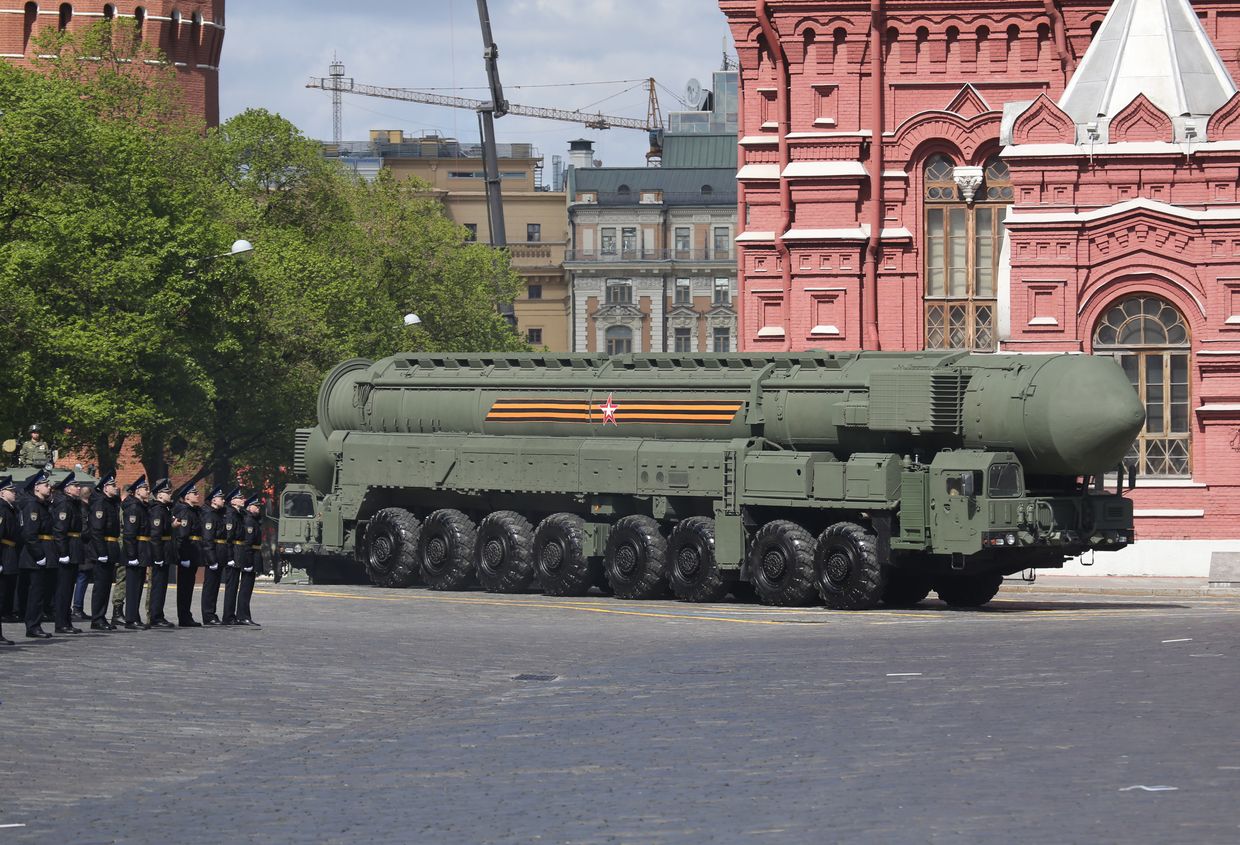

Satellite images reveal that Russia has expanded and modernized at least five nuclear-related facilities near European borders in recent years, Swedish broadcaster SVT reported on June 16, citing new imagery obtained from Planet Labs.
One of the most notable developments is in Kaliningrad, where the suspected nuclear weapons storage site has undergone significant reconstruction.
Images taken in May 2025 show the addition of triple-layered fencing, new buildings, and advanced communications equipment. Polish Foreign Minister Radoslaw Sikorski previously said that up to 100 tactical nuclear warheads might be stored at the site.
Kaliningrad, a militarized Russian exclave between Poland and Lithuania, is a key concern for NATO because of its advanced missile systems and expanding nuclear infrastructure.

The Osipovichi base in Belarus, a former Soviet nuclear storage facility, is also being renovated. Satellite imagery shows new air defense installations and a modernized loading platform for rail-based logistics.
In Novaya Zemlya, a remote Arctic archipelago long linked to Soviet-era nuclear testing, several new buildings have appeared, reinforcing its role as a potential site for future test activities.
On the Kola Peninsula, near the borders with Finland and Norway, Russia has built about 50 storage bunkers for submarine-launched ballistic missiles and constructed a specialized pier for loading those missiles onto submarines, according to the imagery.
Swedish Defense Minister Pal Jonson responded to the findings, saying Stockholm is "closely monitoring" Russian nuclear capabilities. Sweden officially joined NATO in March 2024 after years of non-alignment, citing escalating Russian threats as a primary reason.
The Kremlin has repeatedly used nuclear threats to pressure Ukraine and Western countries since the start of its full-scale invasion in February 2022.
 The Kyiv IndependentTim Zadorozhnyy
The Kyiv IndependentTim Zadorozhnyy